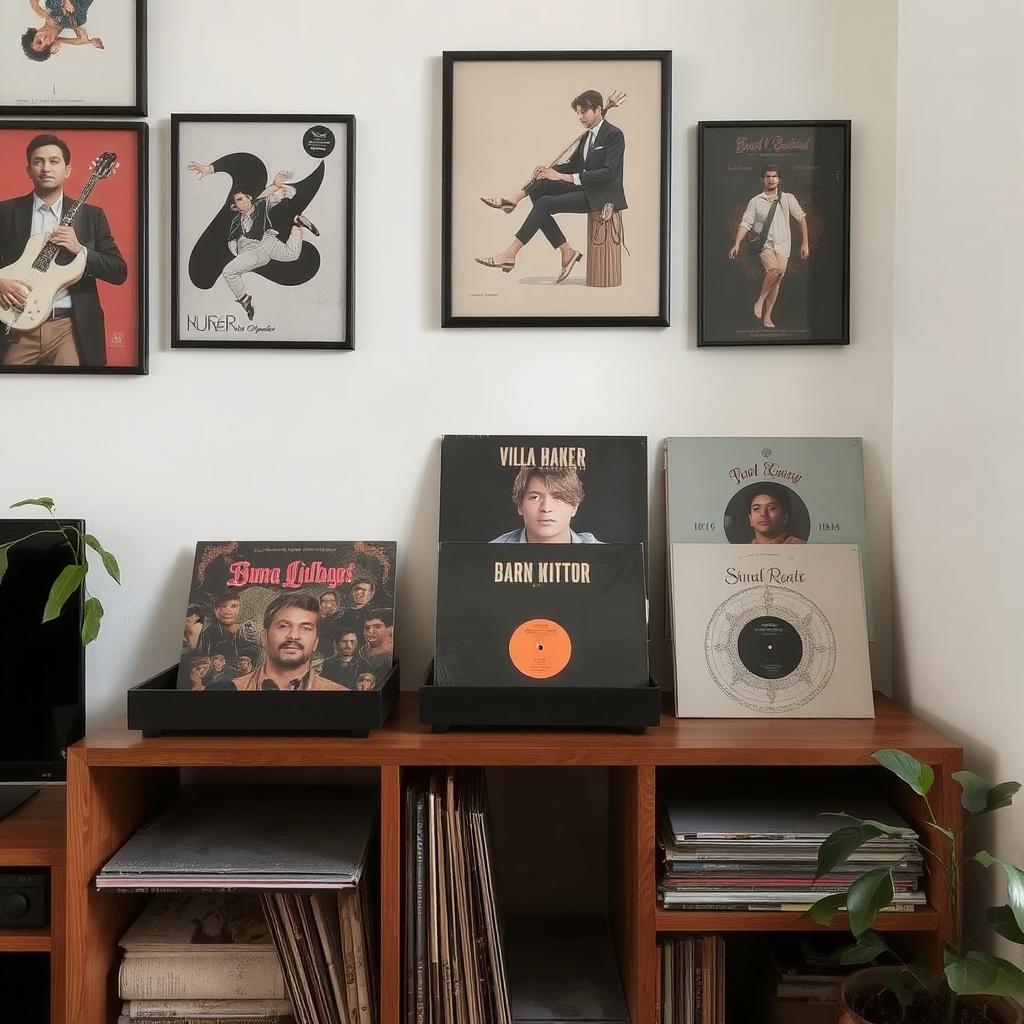Bollywood music and vinyl records share a deeply intertwined legacy. From the 1950s to the 1980s, the golden age of Indian cinema mirrored the golden era of vinyl. During this time, film music was not just a part of the cinematic experience—it became a cultural phenomenon. Vinyl records played a vital role in this journey, turning movie soundtracks into standalone musical treasures and making playback singers into national icons. Bollywood music flourished on vinyl, finding its way into Indian homes, festivals, celebrations, and hearts.
The Rise of Film Music and Vinyl’s Entry
With the release of talkies in the 1930s, Indian cinema saw the integration of songs and music as essential storytelling elements. As film songs gained popularity, there was an increasing demand to listen to them outside the cinema halls. Shellac records were initially used to distribute these songs, but with limited playing time and fragility, they had their constraints.
The arrival of vinyl in the 1950s revolutionized how music was distributed and enjoyed. Long Play (LP) and Extended Play (EP) records offered better sound quality, longer playing duration, and a more durable format. This made it possible to release entire soundtracks on a single disc. For the Indian audience, this was nothing short of a revolution. Music was no longer limited to the cinema; it could now be enjoyed in the comfort of one’s home.
Creating a Market for Film Soundtracks
The growing popularity of film music coincided with a boom in vinyl production in India. The Gramophone Company of India, under the HMV brand, began mass-producing records that featured complete movie soundtracks. Films such as Mughal-e-Azam, Guide, Aradhana, and Amar Akbar Anthony had their music released on vinyl, and the records sold in large volumes across the country.
Record stores became common in cities and towns, often displaying movie LPs in their windows. Collecting film soundtracks became a popular hobby, and listening to vinyl was both a social and personal activity. Bollywood songs reached homes, parties, tea shops, and wedding functions. Music from the movies became part of the country’s cultural fabric.
The Star Power of Playback Singers
Vinyl records helped transform playback singers into superstars. The voices of Lata Mangeshkar, Mohammed Rafi, Kishore Kumar, Asha Bhosle, and Mukesh became instantly recognizable. These singers lent their voices to actors on screen, but it was through vinyl that audiences truly connected with them. Fans memorized songs, sang along, and built emotional connections with their favorite voices.
The popularity of these singers also created a demand for non-film albums and compilations, further expanding the reach of vinyl. Albums featuring “greatest hits” of popular playback singers became bestsellers. Their portraits often adorned the covers, giving listeners a sense of personal connection beyond the film visuals.
Composer-Driven Success Stories
Just as singers gained fame through vinyl, so did composers. Legends like S.D. Burman, R.D. Burman, Laxmikant-Pyarelal, Naushad, and Kalyanji-Anandji became household names. The orchestration, melodies, and arrangements they crafted stood on their own as musical works, thanks to vinyl records that presented their compositions in pristine audio quality.
Composers also started to approach film music with a greater focus on how songs would sound independently of the film’s narrative. This shift allowed them to experiment with instrumentation, structure, and rhythm. Many albums were praised not just as soundtracks but as cohesive musical experiences, with vinyl providing the perfect medium to showcase such artistry.
The Role of Album Art and Packaging
One of the defining features of Bollywood vinyl records was their visual appeal. Album covers often featured vibrant artwork, dramatic stills from the film, or stylized portraits of actors. These covers became iconic in their own right, influencing graphic design trends and serving as collectible pieces of film memorabilia.
Liner notes on the sleeves gave listeners information about the film, the artists, and the songs, further enhancing the overall experience. Holding and examining a vinyl record became a multisensory event—visual, tactile, and auditory.
Mass Distribution and Accessibility
Bollywood’s association with vinyl also contributed to the rise of a national music culture. Hindi film songs, pressed on vinyl, were distributed across India, even in regions where Hindi was not the primary language. This helped unify diverse linguistic groups through a shared love of Bollywood melodies.
Public broadcasters like All India Radio and later Vividh Bharati amplified the reach of these records by playing film songs regularly. As a result, the popularity of film music soared, and vinyl remained the dominant format for music distribution until the rise of cassettes in the 1980s.
The Decline and Enduring Legacy
By the mid-1980s, the more affordable and portable cassette tapes began to replace vinyl records. Vinyl production slowed and eventually halted, but the impact of the format on Bollywood music remains unmatched. Many of the most celebrated songs from Indian cinema were first introduced to listeners on vinyl.
Today, collectors and audiophiles are rediscovering the magic of Bollywood vinyl. Reissues of classic film soundtracks and rare LP finds are fueling a quiet revival. For many, these records represent not just songs but memories of a golden age of music and cinema.
Conclusion
Bollywood music thrived on vinyl because the format offered the perfect blend of sound quality, packaging, and accessibility. It helped launch careers, preserve masterpieces, and bring joy to millions. The vinyl era captured the soul of Indian cinema’s musical heritage and turned it into a lifelong soundtrack for generations. Even in a digital world, the legacy of Bollywood on vinyl continues to spin strong.


